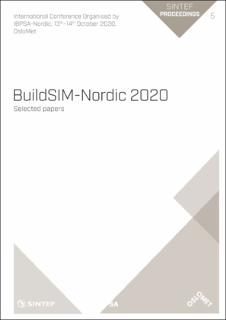Calculation of airflow rate with displacement ventilation in dynamic conditions
Chapter, Peer reviewed, Conference object
Published version
Permanent lenke
https://hdl.handle.net/11250/2683223Utgivelsesdato
2020Metadata
Vis full innførselSamlinger
- SINTEF Proceedings [402]
Sammendrag
Design of displacement ventilation (DV) is usually based on a heat balance method when overheating is the primary indoor climate concern. Various models for calculating airflow rate have been developed for several decades. Commonly used models are based only on steady-state models. However, in practical applications, the performance of DV depends on potentially dynamic parameters, such as strength, type and location of heat gains and changing heat gain schedule. Besides, thermal mass affects dynamically changing room air temperature. The paper presents case studies of dynamic DV design in a lecture room. The difference in the designed airflow rate was studied with various models in both dynamic and steady-state conditions. The presented dynamic DV model demonstrated a capability to take into account the combination of dynamic parameters in typical applications of DV. In the case analysed, the airflow rate calculated with the dynamic model is significantly lower than the one calculated with the steady-state models.

